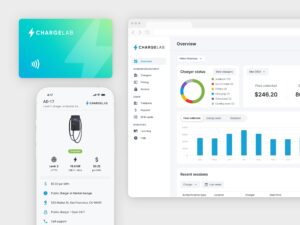Welcome to our blog article on “What is a flooded battery?” If you’re curious about the ins and outs of this battery type, look no further! A flooded battery refers to a traditional lead-acid battery that contains liquid electrolyte. But why should you care about it? Well, understanding the fundamentals of a flooded battery is crucial, as it can help you make informed decisions when it comes to powering various devices, from cars to backup power systems. So, let’s delve into the world of flooded batteries and unlock the knowledge that will empower you. Fasten your seatbelts, we’re about to take a deep dive!
What is a Flooded Battery?
A flooded battery, also known as a wet cell battery or a vented lead-acid battery, is a type of rechargeable battery that is commonly used in various applications such as automotive, marine, and renewable energy systems. It is called a “flooded” battery because it contains a liquid electrolyte that is free to move around within the battery casing.
Flooded batteries are known for their reliability, affordability, and long lifespan. They have been used for many years and continue to be a popular choice for various energy storage needs. In this article, we will explore the inner workings of a flooded battery, its construction, advantages, and disadvantages.
Construction and Working Principle
Flooded batteries are comprised of several key components that work together to store and release electrical energy. Let’s take a closer look at each component:
1. Lead Plates: The heart of a flooded battery is its lead plates. These plates are made of a lead-antimony or lead-calcium alloy and are immersed in a diluted sulfuric acid electrolyte. The plates are carefully designed to maximize the battery’s capacity and performance.
2. Electrolyte: The electrolyte in a flooded battery is a mixture of water and sulfuric acid. It is important to note that flooded batteries require periodic maintenance to ensure the electrolyte levels are properly maintained.
3. Battery Casing: The battery casing is typically made of durable plastic or hard rubber. It serves as a housing for all the internal components and helps protect the battery from external impacts and damage.
4. Cell Connectors: Flooded batteries are composed of multiple cells connected in series. Each cell consists of a positive and negative lead plate separated by an insulating material. The cell connectors ensure proper electrical connection between the cells.
The working principle of a flooded battery involves a chemical reaction between the lead plates and the sulfuric acid electrolyte. When the battery discharges, lead sulfate forms on the plates, and the electrolyte loses its effectiveness. During the charging process, this lead sulfate is converted back into lead and sulfuric acid, rejuvenating the battery for future use.
Advantages of Flooded Batteries
Flooded batteries offer several advantages that make them a popular choice for various applications. Here are some key advantages:
1. Affordability: Flooded batteries are generally more affordable compared to other types of rechargeable batteries. Their simple design and long-standing manufacturing processes contribute to their cost-effectiveness.
2. Reliability: Flooded batteries are known for their reliability and have a long track record of providing consistent performance. They are often used in critical applications where a reliable power source is essential.
3. Robust Construction: The construction of flooded batteries is sturdy, allowing them to withstand harsh conditions and vibrations. This durability makes them suitable for use in automotive and marine environments.
4. Deep Discharge Capability: Flooded batteries are designed to handle deep discharges without significant damage. This allows them to provide power for extended periods, making them ideal for off-grid and backup power systems.
5. Easy Maintenance: Unlike sealed batteries, which are maintenance-free, flooded batteries require periodic maintenance to ensure optimal performance. However, the maintenance tasks are relatively simple, such as checking and adjusting electrolyte levels, making them easy to manage.
Disadvantages of Flooded Batteries
While flooded batteries offer many benefits, they also have some drawbacks that need to be considered. Here are a few disadvantages:
1. Regular Maintenance: As mentioned earlier, flooded batteries require periodic maintenance to maintain electrolyte levels and ensure proper functioning. This maintenance can be time-consuming and may require specialized tools and safety precautions.
2. Acid Leakage: Due to the nature of the design, flooded batteries have the potential to leak electrolyte if not properly maintained or if the battery casing is damaged. This can be hazardous and requires caution when handling the batteries.
3. Ventilation Requirements: Flooded batteries emit potentially harmful gases during the charging process, such as hydrogen and oxygen. Adequate ventilation is necessary to prevent the accumulation of these gases, reducing the risk of explosions or other safety hazards.
4. Weight and Size: Flooded batteries are generally heavier and bulkier compared to sealed batteries with similar capacity. This can be a limiting factor in applications where weight and space are critical considerations.
Applications of Flooded Batteries
Flooded batteries find numerous applications across various industries. Here are some common uses:
1. Automotive: Flooded batteries are widely used in automobiles for starting, lighting, and ignition (SLI) purposes. They provide the initial burst of power required to start the engine and also power the vehicle’s electrical systems.
2. Marine: Boats and other marine vessels often rely on flooded batteries to provide power for starting engines, running electronic equipment, and powering lights and appliances.
3. Renewable Energy Systems: Flooded batteries are commonly used in off-grid and renewable energy systems such as solar and wind power. They store excess energy generated by these systems for later use when the energy production is low or not available.
4. Telecommunications: Flooded batteries serve as backup power sources in telecommunication systems to ensure uninterrupted operation during power outages.
5. Industrial Applications: Flooded batteries are utilized in various industrial applications, including uninterruptible power supply (UPS) systems, forklifts, emergency lighting, and more.
Overall, flooded batteries provide reliable and affordable energy storage solutions for a wide range of applications, making them a popular choice in many industries.
In conclusion, a flooded battery is a type of rechargeable battery that utilizes a liquid electrolyte and lead plates to store and release electrical energy. Despite its maintenance requirements and potential drawbacks, a flooded battery offers advantages such as affordability, reliability, and deep discharge capability. It finds applications in automotive, marine, renewable energy, telecommunications, and industrial sectors. By understanding how flooded batteries work and their pros and cons, one can make informed decisions when choosing an appropriate battery for specific needs.
Frequently Asked Questions
What is a flooded battery?
A flooded battery is a type of lead-acid battery used in various applications, including automotive, marine, and renewable energy systems. It is called “flooded” because the battery cells are filled with a liquid electrolyte solution.
How does a flooded battery work?
A flooded battery consists of several cells, each containing positive and negative plates made of lead. The cells are filled with a mixture of sulfuric acid and water, known as electrolyte. When the battery is charged, a chemical reaction occurs between the lead plates and the electrolyte, creating electrical energy.
What are the advantages of a flooded battery?
Flooded batteries are known for their cost-effectiveness and reliability. They have a relatively low initial cost compared to other battery types, making them a popular choice for various applications. Additionally, flooded batteries can deliver high current outputs and can withstand heavy cycling, making them suitable for deep-discharge applications.
What are the disadvantages of a flooded battery?
One of the main disadvantages of flooded batteries is their maintenance requirements. They need regular maintenance to ensure the electrolyte levels are properly maintained and the battery is functioning optimally. Over time, the electrolyte can evaporate, requiring periodic refilling with distilled water. Additionally, flooded batteries should be installed and used in well-ventilated areas because they emit gases during the charging process.
Can a flooded battery be used in any position?
No, flooded batteries should always be used in an upright position. This is because the liquid electrolyte can spill if the battery is tilted or placed upside down. The proper positioning ensures that the electrolyte covers the plates adequately for optimal battery performance and longevity.
What safety precautions should I take when using a flooded battery?
When handling a flooded battery, it is important to wear appropriate protective gloves and eyewear. The battery terminals should be properly insulated to prevent accidental short-circuits. Additionally, be cautious when working with the battery’s electrolyte, as it is corrosive and can cause burns if it comes into contact with the skin or eyes.
Final Thoughts
A flooded battery, also known as a wet cell battery, is a type of lead-acid battery that contains a liquid electrolyte solution. This battery design utilizes lead plates immersed in the electrolyte, enabling the chemical reactions necessary for power production. The liquid electrolyte needs to be replenished periodically during the battery’s lifespan to ensure its optimal performance. In conclusion, a flooded battery is a traditional lead-acid battery configuration that relies on a liquid electrolyte and is commonly used in various applications, including automotive and renewable energy systems.



